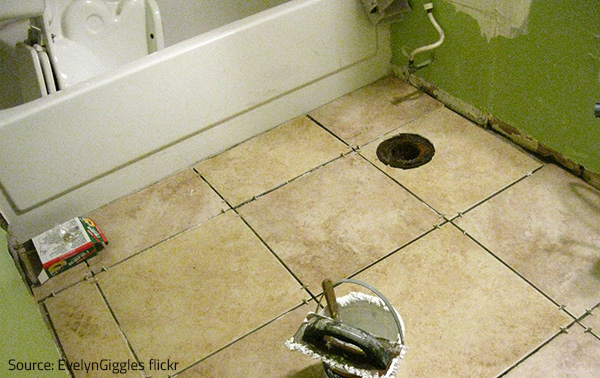Exactly How to Help Prevent Water Damage in Your Bathroom
Exactly How to Help Prevent Water Damage in Your Bathroom
Blog Article
What're your thoughts about Looking for Signs of Water Damage in the Bathroom?

The washroom is exceptionally at risk for moist accumulation as well as prospective water damage because of the regular use of water in it. This post uses basic examination techniques to help discovering water damage dangers.
The regular use water in the restroom makes it incredibly susceptible for damp build-up as well as prospective water damages. By checking it consistently, you can lower water relevant problems.
The adhering to collection of evaluations is easy to perform and should be done once in every 3 months in order to maintain your washroom healthy and also to stop prospective water damages triggered by the bath tub, the shower, pipeline joints as well as plumbing, sinks, cupboards, as well as the toilet
Do not neglect performing these inspections and also be detailed while executing them. Bear in mind that these easy inspections can save you a lot of cash by giving early indications for water damage
Bath tub and also Shower
The shower as well as bathtub require unique interest as well as upkeep. Inspect the ceramic tiles and change if split. Ensure that there is no missing cement between the floor tiles. Examine and change broken caulking at joints where the walls meet the flooring or the bathtub. Obstructed drains and also pipes issues will protect against the tub from drying and also might show severe problems under the tub. Speak with a specialist promptly to prevent architectural damage. Take notice of stainings or soft areas around the bath tub wall surfaces as they may show an interior leak.
Plumbing
Signs for water damages are hard to find given that a lot of pipes are set up inside the walls.
Pay unique attention to floor covering as well as wall surfaces wetness and also spots as they might show an unnoticeable plumbing trouble. Inspect dampness levels in adjacent spaces also.
Sinks and also Cabinets
Sinks and closets are exposed to dampness and moisture day-to-day as well as are usually overlooked. Check regularly under the sink as well as on the kitchen counter over it. Repair any type of drip in the catch as it may recommend drainpipe issues. Check out the sink, slow draining pipes might indicate a blocked drainpipe. Change sink seals if they are cracked or loose.
The Bathroom
The commode is a susceptible water junction. Examine the water lines and search for leakages around the commode seat, in the hose pipe, as well as under the water container. If you spot any signs of wetness on the flooring around the toilet, check for leakages in the toilet edge and tank seals.
Know that hanging commode bowl deodorants boosts the chances for blockages.
Water Damage Signs In The Bathroom To Avoid Cleanup
Musty smell
This is one of the easiest signs to catch because musty smells are so odorous. The damp, earthy, moldy smell should be a big red flag. The smell will develop when moisture gets trapped in surfaces, and begins to facilitate mold growth. Leaking pipes under cabinets, inside walls, and behind shower fixtures will cause moisture to stay trapped and not dry, which will lead to mold growth and spread. As soon as you notice any musty smells in your bathroom, have it checked for hidden water damage and cleanup signs.
Visible mold
If the smell isn’t there to give it away, sometimes you will actually see mold growth. Finding mold in your bathroom is a serious problem, because mold is very harmful to your health. By the time mold growth is visible, it also means that water damage has already occurred and been present for some time. The only way the mold problem can be resolved is to find the source of the moisture and get it stopped. To safely and adequately remove mold, you need to have professionals handle the remediation. Do not waste any time in getting mold problems addressed, fixed, and sanitized so that you can protect you and your family from the many respiratory symptoms caused by mold exposure.
Damaged floors
Bathroom floors should be able to withstand some exposure to water while still remaining in good condition. However, when excess exposure or water leaks occur, they will begin to damage even the most water-resistant flooring. If you notice any cracking, bubbling, staining, or warping on your bathroom floors, there is probably a water leak somewhere causing the distortion. If you notice areas of the floor have become softer, or even have a spongy feeling, there is probably damage to the subfloor. Subflooring is typically made up of plywood. When plywood is exposed to water or moisture, it will absorb it. Once it has become saturated, the weight of the excess water will cause the wood to swell and soften. Check the floors in your bathroom frequently to catch any of these sings before they lead to damaged subflooring.
Changes on walls
When water leaks behind walls, it will cause changes in the drywall. Peeling plaster, blistering paint, and soggy wallpaper are all good indicators that excess water is building up behind the wall. Water leaking behind drywall will cause it to swell and be soft to the tough. If you start to notice gaps along the trim of your walls, or where tile meets the wall, it could also be a strong indicator that there is a leak behind the wall. Any changes, distortion, or damage on the walls should be evaluated as soon as you notice it to prevent further water damage and cleanup.

As a devoted person who reads about How to Prevent Bathroom Water Damage, I thought sharing that excerpt was essential. Sharing is good. Who knows, you may just be doing someone a favor. Thanks for your time. Please check our website back soon.
Go Company Report this page